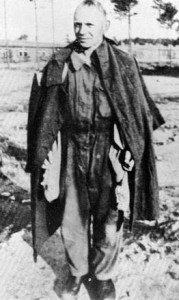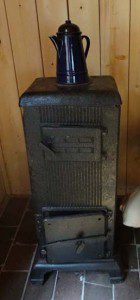
Among the unique elements of X Organization and its various departments – tunnel construction, sand dispersal, security, intelligence, diversion and manufacturing – was its ability to function in complete secrecy inside Stalag Luft III.
POWs recorded their individual roles as those of a digger, a penguin, a stooge or a forger without really having much knowledge of any other department. The system operated on a “need to know basis,” or with the understanding that the entire operation was safer if all any one man knew was his own job and nothing more.
John Colwell, the tin-basher who worked initially fabricating kitchen utensils for his barracks mates and digging tools for the tunnellers, had no concept of where the sand was going, until the day he joined a friendly game of horseshoes in the spring of 1943.
“Suddenly, these two Dutch POWs came along and sort of scuffed around in the middle of our game,” Colwell said. “I remember thinking it wasn’t very considerate of them. And then I saw the sand trickling out of their pant legs and I realized what was going on.”

Meanwhile, Albert Wallace, a penguin carrying sand to the trapdoor in row 13 at the North Compound theatre in the winter of 1944, said he initially knew nothing about the escape plan. Originally assigned to Hut 101 when he arrived at Stalag Luft III in 1943, Wallace was shortly afterward transferred to Hut 104, in Room 23, next to the most important stove in the compound.
“I had no idea it was the tunnel room,” he said. “I didn’t know for weeks that goddamn tunnel was seven feet from my bunk bed (under that stove).”
In addition to his penguin duties, Wallace had one additional task – it was his and his alone – as each morning after roll call he dashed to the compound dump in search of one vital commodity – solder, enough solder to help patch together the Klim cans that formed the air-ventilation shaft under the trolley tracks in Tunnel “Harry” … a need to know basis.